The best places in Japan for culture, nature and escape.
It’s been a scary year, and everyone is looking for an escape. We asked our readers to vote for their top 10 travel destinations in Japan for 2021 (once travel is safe again), and these are their picks.
Each destination highlights an escape from busy tourist spots and everyday life for a chance to reflect and get back in touch with nature or even discover the heart of communities in rural and small-town Japan.
If you’re traveling to one of these destinations, we want to hear about it. Tag us on social media with #GaijinPotTravel.
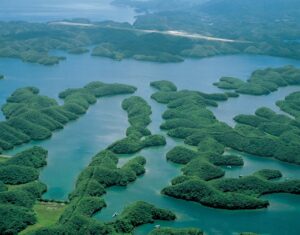
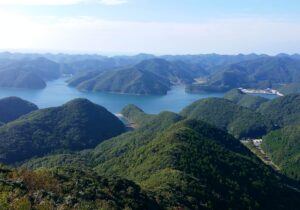
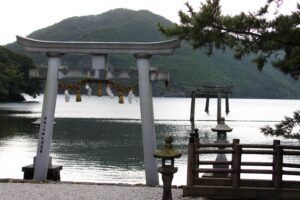

10
Tsushima, Nagasaki
An island as rich in history as it is with wildlife and white sandy beaches.
Located at the halfway point of Korea and Japan, Tsushima definitely has a story to tell.
On the northern part of the island, you’ll find the Eboshidake Observatory, which offers 360-degree views of the region. You might even be able to see Aso Bay on a clear day. Try to visit during the morning though, as this is a major tourist attraction that’s visited right after Watazumi Shrine.
For a slower island experience, spend the day at Miuda Swimming Beach. Ranked as one of Japan’s top beaches, this beach has the perfect balance of ocean and mountain views. You can even camp out for a small fee.
Head south for the Tsushima Wildlife Conservation Center and spot the Tsushima leopard cat among the other rare species on the island. The southern part of the island is also home to Kaneda’s castle ruins, one of Japan’s top castles, and Banshoin Temple, one of the largest gravesites in the country.
- Don’t miss: The Watazumi Shrine Traditional Festival happens every August and is one of the biggest events on the island. Catch traditional maiden shrine dances to see a more traditional side of Japan.
- When to go: The best times to visit would be in the colder months from September to December as the weather is much clearer and more conducive for outdoor activities.
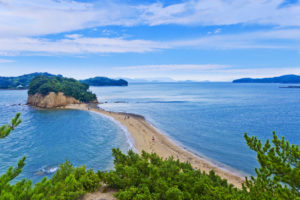
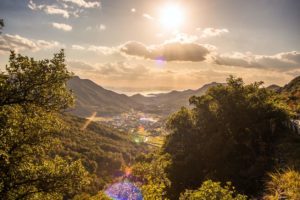
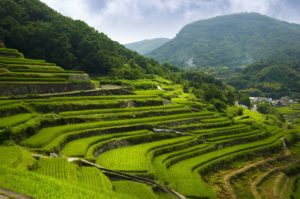
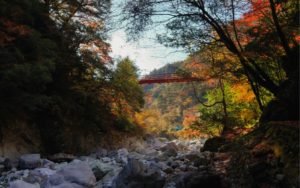
9
Kagawa, Shikoku
A destination where nature, art and spirituality come together.
The end of one journey is the start of a new one. Though home to the Shikoku 88 pilgrimage’s last leg, there is so much left to explore in Shikoku’s smallest region.
A climb up 1,368 stone steps on Mount Zouzu will lead you to Kotohira-gu (Konpira-san), one of Kagawa’s most famous attractions. Being one of the more challenging climbs in Japan, more often than not, you may want to opt for a hiking stick to aid you on your way up. Once you reach the top, though, you’re rewarded with scenic views of the ocean.
For a less intense experience, board the ferry from Takamatsu and visit one of the many islands famous for art museums. You can even get your cultural fix and maybe a less intense workout by biking from one museum to the next.
If you’re more into nature and consider yourself a romantic, take a day trip to Angel Road. A half-kilometer sandbar that connects to Shodoshima, crossing it is all about the timing.
- Don’t miss: Held each year in December, Sanuki Mannou Park is home to one of the biggest evening illumination events in the prefecture.
- When to go: For Angel Road, visit in the warmer spring and summer months when the days are longer and the weather is much clearer.

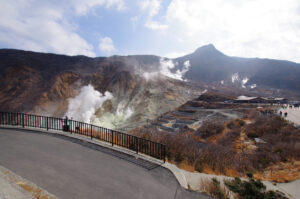
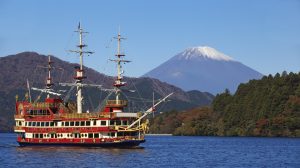

8
Hakone, Kanagawa Prefecture
Soothe your soul in Hakone’s volcanic hot springs and try an egg said to give more life.
With attractions that include a volcanic valley, a pirate ship cruise, and a handful of museums Hakone offers plenty to do for those looking for a productive weekend trip.
One of the main sightseeing spots of Hakone is the volcanic valley Owakudani. Formed from a volcanic eruption over 3000 years ago, the landscape looks like it’s straight out of an old sci-fi film. Imagine clouds of steam rising from pools of boiling water, yellow-orange rocks scattered everywhere, and the sharp scent of rotten eggs. Don’t forget to try the black eggs sold at the souvenir shops since it’s been said that you can add seven years to your life if you eat one.
Lake Ashinoko is another popular destination among tourists because it offers a completely different perspective of Mount Fuji. To get the best view, hop on one of the massive pirate ships that cruise along the lake and shoot your shot. Be wary of the gusts of wind on the upper decks though.
If staying at a traditional Japanese inn or ryokan is beyond your budget, end your stay by checking out some of the hot springs or onsen nearest Hakone-Yumoto Station. Most of those establishments offer affordable entrance fees for day trips. There’s nothing like a long soak in an onsen to soothe any aches and pains that come with a full itinerary.
- Don’t miss: Feel like you've travelled back in time by catching a traditional feudal lord parade called the Hakone Yumoto Daimyo Gyoretsu every Nov. 3
- When to go: For the best chance to see Mount Fuji go in the colder months either very early or much later in the day as visibility is fickle and cloud coverage is hard to predict.
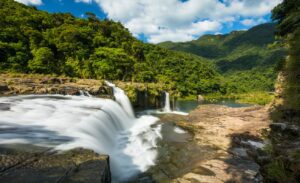
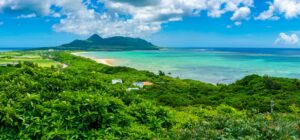
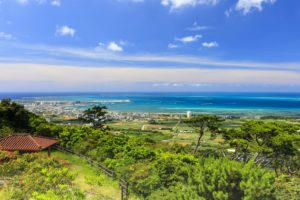
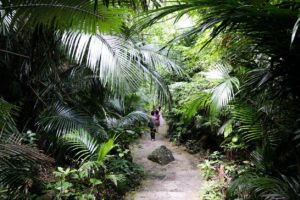
7
Yaeyama Islands, Okinawa Prefecture
Journey across the deep blue ocean and explore the tropical jungles that await.
A treasure trove of white sandy beaches and clear turquoise waters, the Yaeyama Islands of Okinawa is a secluded oasis from all the stressors of urban living.
Ishigaki Island is the main island that serves as a gateway to explore the others in the region. Notable attractions on the island include the mangrove-lined Miyara River where you can go for kayaking tours and the Tamatorizaki Observation Point that overlooks the bay and gives you a great view of the island.
Taketomi Island is the island located right beside Ishigaki and is where you can see a piece of Okinawan history in the form of a well preserved Ryukyu Village.
Stargazers should try their luck by visiting Hateruma Island, the southernmost part of Japan. The uninhabited island is said to have the most stunning views of the night sky.
- Don’t miss: Join the two day Ishigaki Island festival that happens in November. Watch live performances, a fireworks display, and dig into some traditional Japanese festival food!
- When to go: When to go: The best time to visit anywhere in Okinawa is between March and May or late September to early December. That way, you can avoid the rainy season and typhoons.
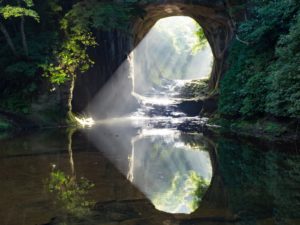
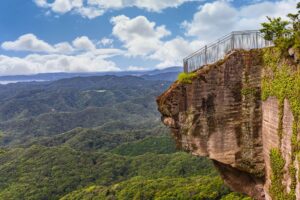
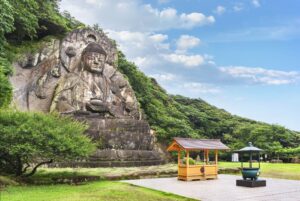
6
Boso Peninsula, Chiba Prefecture
From lush mountains to pristine shorelines, plan your adventure in Chiba.
Escape the crowds and just get lost in nature with a natural sanctuary just beside Tokyo. Easily accessible by trains and a ferry, Boso is every nature lover’s playground.
Natural wonders like Kameiwa Cave alone should be enough to entice you to journey a few hours away from the capital. Start your day early and you just might see one of the most breathtaking morning views. Watching the early light fill the cave as it illuminates the cascading water is something made of dreams.
If you’re up for a little bit more of a challenge, make your way up Nokogiriyama (Sawtooth Mountain) to see the country’s biggest Buddha. Did we mention that this Buddha is entirely carved into the mountainside? You may run into a few howling monkeys but it’s all part of the adventure.
For beach bums, catch a wave at Ichinomiya Beach. Originally intended to host the first Olympic surfing competition site for the 2020 games, this beach is a great spot to hang loose and just relax.
- Don’t miss: Getting up early to catch beautiful views of Kameiwa Cave, especially during the autumn season.
- When to go: Spring or fall for the ideal hiking weather and from July to August for surfing.
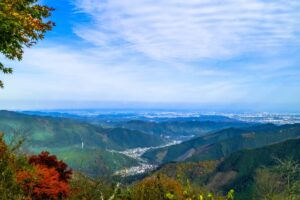
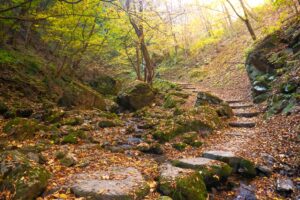

5
Okutama, Tokyo Prefecture
An escape from busy city streets right at Tokyo’s doorstep.
As awesome as central Tokyo is, it’s a bit busy, to say the least. Thankfully, the great outdoors is closer than you think. Located in Western Tokyo, the small town of Okutama is well-known among city folk as a rustic retreat perfect for day trips and weekend getaways.
Sweeping forests and mountains envelop the region. Whether viewed in autumn when the trees turn to vibrant hues or during the cool mornings when fog blankets the hills, the scenery is breathtaking. Hikers can discover the “three mountains of Okutama,” Mt. Otake, Mt. Mito and Mt. Gozenyama, or try a more challenging trek up Mt. Kumotori for a rewarding view of Mt. Fuji.
Anglers can try their hand at catching cherry salmon and trout on Lake Okutama, a reservoir that supplies 20 percent of Tokyo’s drinking water. If the fish aren’t biting, take a stroll over the lake using its pedestrian bridge made of floating drums. Upstream from the Tamagawa River, you’ll find the Hatonosu Valley, a spectacular canyon and trail with beautiful foliage and crystal-clear water.
Of course, you’re more than welcome to lounge about, as well. There are many ryokan (traditional Japanese inn) found in Okutama. Some of which are centuries old. You can soak in a serene onsen (hot spring) or try a bowl of spicy wasabi udon, a local specialty.
- Don't miss: Besides having several mountains for outstanding hiking, Okutama is also great for canyoning. With a guide, it makes for a safe but thrilling adventure. Okutama is also home to the annual Okutama Noryo Firework Festival every summer. If you're able, take the four-hour hike up Mount Atago for an unrivaled view of the fireworks over the forests.
- When to go: There is no best season for visiting Okutama. However, spring is considered the most popular and most expensive time to visit. Summer is fairly slow due to the heat, while winter is slow due to the cold. The best time for hiking is between October and November, thanks to the weather and spectacular koyo (autumn views).

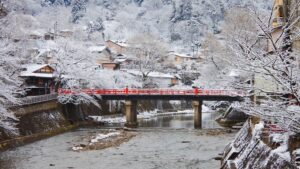
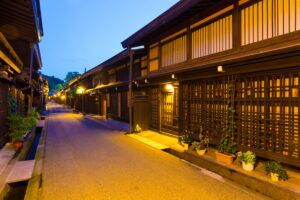
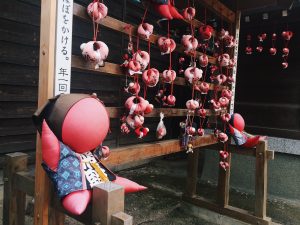
4
Takayama, Gifu Prefecture
A secluded mountain city with 300 years of history.
Takayama is a city in Gifu nestled at the foot of the Japanese Alps. Thanks to its remote location and high altitude, Takayama has preserved much of its culture over the last 300 years. This can be seen in its beautiful Edo-period architecture, temples, shrines and just how the town incorporates it with the natural mountain scenery.
Takayama’s preserved old town, Sanmachi Suji, is the city’s center. Traditional houses, souvenir shops and cafes blend in harmoniously with historic sake distilleries and miso paste stores. Here, you try local delicacies like Hida beef. Sanmachi Suji is also home to the Takayama Museum of History and Art, the Fujii Folk Museum and Takayama Jinya.
Sakurayama Hachimangu Shrine, near the northeast of the city, is Takayama’s oldest shrine. It’s home to the popular Takayama Matsuri, most famous for its floats and intricate traditional marionette performances. The shrine is also the beginning of the Higashiyama Walkway, a serene course with stunning views of the Japanese Alps that leads to the city’s east side.
- Don't miss: Of course, you can't forget the Japanese Alps. Just an hour from Takayama is Kamikochi, a natural valley on the borders of Nagano. Called the "Japanese Yosemite Valley," you'll find quiet streams and flat trails that even a novice hiker can enjoy.
- When to go: Summer is a bit too hot for most people. The average temperature can reach 35 °C. The humidity is also no joke. Vehicles are also unable to enter Kamikochi in summer. Autumn is considered the most pleasant time to visit Takayama, but winter in Takayama is also an excellent opportunity to see a traditional Japanese town with a serene snowy backdrop.
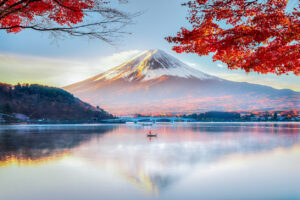
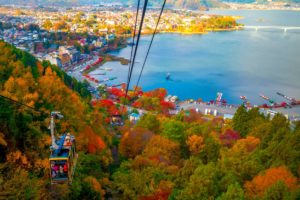
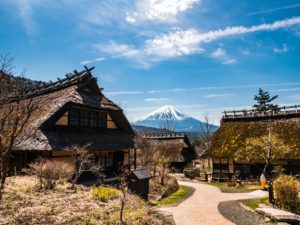
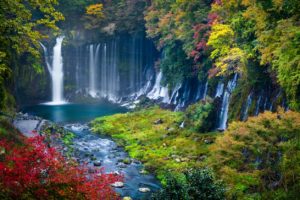
3
Fuji Five Lakes, Yamanashi Prefecture
Loads for adventurers and picturesque views of Mt. Fuji.
The Fuji Five Lakes is the group name for five beautiful lakes found at the base of Japan’s most distinguished landmark, Mt. Fuji. The lakes are named Kawaguchi, Yamanaka, Saiko, Shōji and Motosu, all of which were formed by Fujisan’s powerful eruptions. Each lake is pristine, offering magnificent scenery.
Of all the lakes, Kawaguchi is the most accessible. However, that just makes the other lakes all the more removed for busy crowds. Still, Kawaguchiko Town does make for a convenient hub for the region. Each lake presents visitors opportunities for outdoor activities such as sailing, fishing, camping, hiking, and much more.
You can take a dip in an onsen or taste the local specialty, hoto noodles, at one of the small towns located on the shores. There are also quaint museums such as the Kawaguchiko Music Forest. The nearby Aokigahara Jukai Forest, a sea of trees home to myths, curses and ice caves, or the grand Fujiyoshida Sengen Shrine may also be of interest.
- Don't miss: Every night from Aug. 1 to Aug. 5, a brilliant fireworks display is held consecutively at a different lake. The fireworks shows coincide with the lake's five respective festivals.
- When to go: Every season offers something different for the five lakes and surrounding area. Spring and Autumn are arguably the most attractive times to visit, thanks to the clear and comfortable weather. However, snow sports and resorts are only available between December and April. Moreover, Mt. Fuji's climbing season begins in July and ends in September.
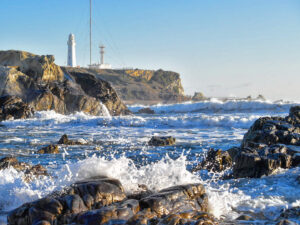

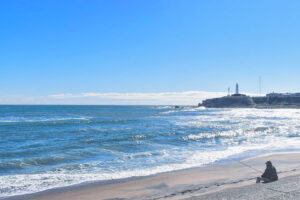
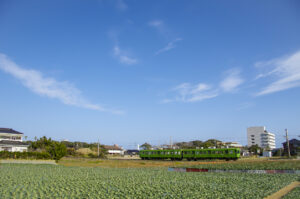
2
Choshi, Chiba Prefecture
Your ticket to ride!
Choshi is a charming port town famous for its soy sauce and fishing industry and its outstanding panoramic views of the Inubosaki coast. However, recently, it’s also becoming well known for wind energy. The city is at the forefront of developing unobtrusive wind farms right on the shoreline.
The best way to view it is on the historic Choshi Electric Railway. The modest train line travels from Choshi to Tokawa along the coastline and through the city’s picturesque countryside. Passengers on the old-fashioned train can spot European architecture, crashing sea capes and the Inubosaki Lighthouse. Constructed by British engineer Richard Henry Brunton, the “father of Japanese lighthouses,” Inubosaki Lighthouse is the city’s symbol and landmark.
Other attractions include the Chikyu no Maruku Mieru Oka Ocean View Observatory, Byobugaura Cliffs and Enpuku-ji Temple. All of which offer breathtaking views of the setting sun.
- Don't miss: During summer, which is Japan's traditional season for telling ghost stories, Choshi Dentetsu gets campy and fun by turning its train into a rolling haunted house. Called the Spooky Ghost Train, tickets are sold on weekends from July through the end of August.
- When to go: The hottest months in Choshi are typically August, July and September. The temperature gets colder from December to March but is usually cool.
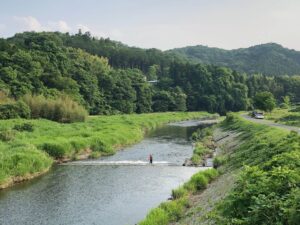
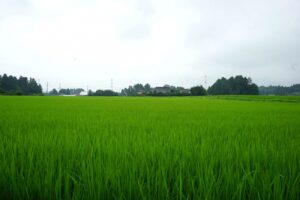

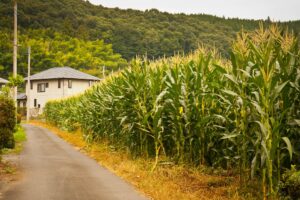
1
Nakagawa and Otawara, Tochigi Prefecture
Small town charm and rural Japan
Tochigi’s peaceful Nakagawa and Otawara are quaint fishing and farming towns producing several of your favorite foods in Japan, including mango, tea, kiwi fruit, and coffee. The communities are well known for anglers and campers, but they are also increasingly popular with tourists seeking a rural Japan experience.
In Otawara, you can stay with a real farming family, working with them in the fields, and learning what life in the countryside is truly like. Called nōka minpaku, or staying at a farmer’s residence, the experience will let you participate in actual communities and culture whilst interacting with locals.
Nearby, Nakagawa was designated as one of “The Most Beautiful Villages in Japan.” You can dine on wild boar, or try your hand at catching sweetfish in traps at the Takase Kanko Yana, a weir with rushing water on the Ara River. You can even have it cooked right in front of you.
- Don't miss: April's Yatai Matsuri is a loud two day event based around Kanadoro in downtown Otawara. Representing the different regions of Otawara, the beautifully decorated floats are held up by locals whose goal is to make as much noise as possible in order to win the Yatai battle.
- When to go:The warmer months are a great time to visit when you can make the most of the area’s outdoor activities.